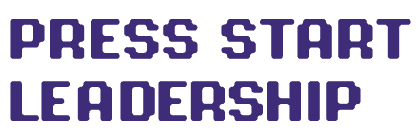Strategies for Discerning What Stays and What Goes in Video Game Production for Optimal Results
In the world of video game development, there’s an adage that’s been passed around for years, both humorous and sobering: “kill your babies.” While the phrase might initially sound jarring, its message is clear — sometimes, you need to let go of cherished ideas or elements to ensure the larger project thrives. This process, often termed ‘scope reduction,’ is a crucial aspect of game development, ensuring projects remain feasible, within budget, and timely. This article delves deep into the intricacies of scope reduction, offering strategies and insights to make those hard decisions without compromising the game’s core vision.
The Dangers of Over-Scoping in Game Production
Before we dive into the nitty-gritty of reducing scope, it’s important to understand the perils of over-scoping:
- Budget Overruns: Every additional feature or element requires resources – from design to testing. Over-scoping can quickly escalate costs, potentially making the project financially unviable.
- Delayed Launches: A game that’s forever in development risks becoming outdated or losing market relevance.
- Quality Compromises: Stretching resources to accommodate every feature might mean each element doesn’t get the attention it deserves, affecting the overall game quality.
- Team Burnout: Continual crunch times and ever-expanding to-do lists can exhaust teams, leading to decreased morale and productivity.
Embracing the Philosophy of ‘Less is More’
A streamlined game with a clear focus can often be more impactful than a sprawling one with multiple, under-developed features. Consider iconic games like ‘Flappy Bird’ or ‘Tetris.’ Their simplicity is their strength. They offer engaging gameplay without overwhelming the player with myriad features. As a game developer, embracing this philosophy of ‘less is more’ can be the first step towards effective scope management.
Strategies for Effective Scope Reduction
1. Prioritize Core Game Mechanics: Identify the heart of your game – the primary mechanics that drive gameplay. Any feature or element that doesn’t enhance or support this core can be a candidate for elimination.
2. Modular Development: Design your game in modules or segments. This way, if a particular module is causing delays or doesn’t fit into the broader narrative, it can be removed without affecting the overall structure.
3. Continuous Playtesting: Regular playtesting can offer insights into which elements of the game are truly engaging and which feel superfluous. Feedback from real players can be invaluable in determining what to trim.
4. Set Clear Milestones: Break down the development process into clear milestones. If certain features are causing consistent delays in achieving these milestones, it might be time to reconsider their inclusion.
5. Embrace Agile Development: Agile methodologies prioritize flexibility and iterative development. By adopting an agile approach, developers can regularly assess project scope and make necessary adjustments.
6. Avoid ‘Feature Creep’: It’s not uncommon for developers to continually think of ‘just one more feature’ as the game progresses. While innovation is great, there’s a need to avoid endless additions that bloat the game without substantial value addition.
Handling the Emotional Aspect of Scope Reduction
For many developers, their game is a passion project. Each feature, character, or narrative thread might feel deeply personal. Hence, making cuts can be emotionally challenging:
1. Detachment is Key: While passion is vital for creativity, there’s a need for a degree of emotional detachment when evaluating game features. Viewing decisions through the lens of overall game health rather than personal attachment can aid objective decision-making.
2. Feedback as a Pillar: Sometimes, feedback from team members or playtesters can help reinforce or guide scope reduction decisions. It offers an external perspective, free from the biases of personal involvement.
3. Remember the Larger Vision: While a particular feature might be dear, it’s essential to remember the broader game vision. If a specific element doesn’t align with this vision or impedes its realization, it might be time to let go.
4. Document and Archive: Just because a feature doesn’t fit into the current game doesn’t mean it’s a bad idea. Document and archive these elements. They might be perfect for a sequel, DLC, or an entirely different game.
Engaging the Team in Scope Reduction Decisions
A game’s development is a collaborative endeavor. Engaging the entire team in scope decisions can make the process smoother and more effective:
1. Open Dialogues: Encourage team members to voice their opinions and concerns. They might offer insights that hadn’t been previously considered.
2. Departmental Check-ins: Regularly check in with different departments (art, design, testing) to understand challenges they might be facing. Their on-ground perspective can highlight areas ripe for scope reduction.
3. Decentralize Decision Making: While a project lead or director will have the final say, decentralizing decision-making to some extent can empower team members and lead to more informed choices.
4. Highlight the Positives: Ensure the team understands the reasons behind scope reduction — be it improving game quality, ensuring timely launches, or managing resources better.
Understanding the Balance Between Vision and Viability
Every game starts with a vision – a dream of what it could become. However, as the development progresses, this vision needs to be weighed against the viability of executing it.
1. Keep the End Goal in Sight: It’s easy to become enamored with intricate side quests, detailed backstories, or novel mechanics. However, always ask – does it serve the primary goal of the game?
2. Flexibility Over Rigidity: A rigid adherence to an initial vision, even when faced with clear signs of it being untenable, can lead to significant problems down the line. The ability to pivot, even if it means moving away from some original ideas, can be the difference between success and failure.
Leveraging Tools and Technology for Efficient Scope Management
In the digital age, there are myriad tools and technologies available that can assist game developers in managing and reducing scope:
1. Project Management Tools: Platforms like Jira, Trello, or Asana can help in breaking down the game development process, assigning tasks, setting priorities, and tracking progress. These tools allow for a visual representation of the project, making it easier to spot and address scope issues.
2. Feedback Platforms: Tools like UserVoice or Canny can collate feedback from playtesters, beta testers, or even team members, providing a clear picture of which features resonate and which might be extraneous.
3. Analytics: In-game analytics can offer data-driven insights into player behavior. If certain features or levels are consistently skipped or not engaged with, it might be an indicator that they aren’t crucial to the game experience.
Communicating Scope Reduction to Stakeholders
While internal team alignment is essential, it’s equally crucial to communicate scope decisions to external stakeholders – be it publishers, investors, or even the gamer community:
1. Honesty is the Best Policy: When discussing scope reduction, it’s vital to be transparent about the reasons behind such decisions. Whether it’s due to budget constraints, time limitations, or quality concerns, stakeholders appreciate honesty.
2. Highlight the Benefits: While the initial reaction might be disappointment, highlighting the benefits of scope reduction – a more refined game experience, better optimization, quicker release times – can help in getting stakeholders on board.
3. Use Visuals: Sometimes, showcasing a trimmed-down version of a feature or a level, juxtaposed against the original, can help stakeholders visualize why the scope was reduced.
4. Keep Channels Open: Regular updates and open channels for feedback ensure that stakeholders feel involved and valued, even if they might not agree with every decision.
Revisiting and Re-evaluating Post Launch
Scope reduction isn’t just a pre-launch strategy. Post-launch, it’s essential to re-evaluate:
1. DLCs and Expansions: Some of the features that were trimmed might find a new lease of life in DLCs or expansions. This not only offers additional revenue streams but also satisfies fans who might have been looking forward to certain aspects.
2. Patches and Updates: Based on player feedback, some aspects of the game might need refining, expanding, or even reducing. Post-launch patches offer an opportunity to adjust scope based on real-world data.
3. Sequels and Spin-offs: As hinted earlier, just because a feature didn’t fit into the current game doesn’t mean it’s lost forever. Sequels, spin-offs, or even new projects might benefit from these archived ideas.
Final Thoughts
Scope reduction, or “killing your babies” as it’s colloquially known, is an integral aspect of video game development. It ensures that the game remains viable and delivers on its core promise, without becoming bogged down by unnecessary features or bloated ambitions. While the process can be emotionally taxing, especially when letting go of features one is deeply attached to, it’s a necessary discipline in the high-stakes world of game development. By prioritizing, staying flexible, leveraging tools, and maintaining open communication channels, game developers can master the art of scope reduction, ensuring their projects are both visionary and viable.
Thank you for reading this article to the end. I hope it has been informative and helpful. If you’d like to learn more about the topics we covered, I invite you to check out my podcast and my YouTube channel where I delve into these subjects in more depth.
Additionally, I would love to stay in touch and keep you updated on all the latest developments and insights in the world of leadership. That’s why I encourage you to sign up for my newsletter. Not only will you receive regular updates, but as a thank you for joining, I will also send you my free eBook, “5 Heroic Leadership Skills.” This eBook is packed with practical tips and strategies that will help you take your leadership skills to the next level.
So don’t wait! Sign up for my newsletter today and start your journey towards becoming a more effective and inspiring leader. I can’t wait to hear from you.


